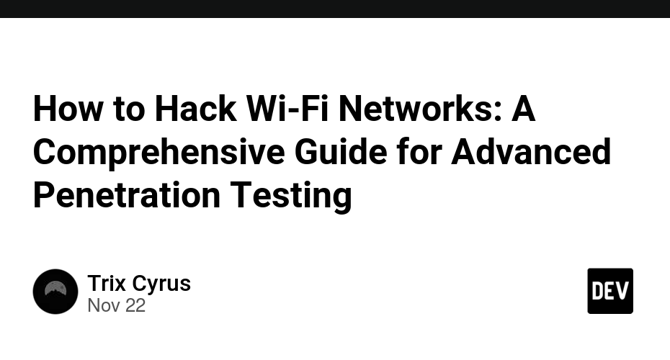Dev
1M
159

Image Credit: Dev
How to Hack Wi-Fi Networks: A Comprehensive Guide for Advanced Penetration Testing
- Cybersecurity professionals can improve their network defense by understanding how Wi-Fi networks are compromised.
- Three main Wi-Fi security protocols are WEP, WPA/WPA2, and WPA.
- Setting up the right environment with tools like Kali Linux, Aircrack-ng Suite, hcxtools, and Wireshark is key to performing penetration testing.
- Advanced WPA2 hacking techniques include capturing handshakes, cracking the handshake, and PMKID attacks.
- WPA3 introduces Simultaneous Authentication of Equals (SAE), making it resistant to dictionary attacks but with exploitable side-channel vulnerabilities.
- To bypass captive portals on public Wi-Fi networks users can use MAC address spoofing, DNS spoofing, and MITM tools.
- Defend against Wi-Fi attacks by using WPA3, disabling WPS, regularly updating router firmware, enabling MAC address filtering and using VLANs to segment your network.
- Fallback to WPA2 and downgrade attacks are possible on WPA3 networks.
- Hacking IoT devices on Wi-Fi can be performed by sniffing unencrypted traffic, exploiting UPnP or brute-forcing web interfaces.
- Specialized tools for Wi-Fi hacking include Wifiphisher, Airgeddon, and Wireshark Filters.
Read Full Article
9 Likes
For uninterrupted reading, download the app